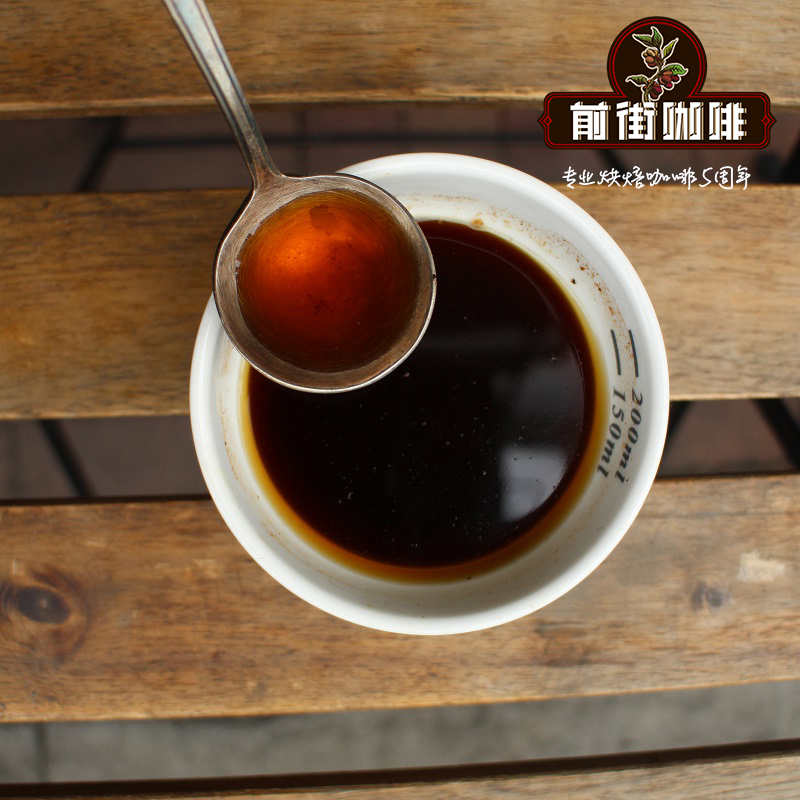What is Puerto Rican coffee? how do you make Puerto Rican coffee? Puerto Rican coffee flavor

Professional coffee knowledge exchange more coffee bean information please follow the coffee workshop (Wechat official account cafe_style)
Puerto Rico has a history of producing coffee for nearly 300 years and was once one of the most productive regions in the world. According to the Starbucks website, Spanish explorers brought coffee from Louis XIV plantations in France to the island in 1736. The fame of Yaucono Selecto is once indistinguishable from that of Kona in Hawaii and Blue Mountain in Jamaica. It is also a favorite of European palaces and the Vatican. Until the 19th century, it was the only cafe in Vienna, Paris and Madrid.
Puerto Rico has a history of producing coffee for nearly 300 years and was once one of the most productive regions in the world. According to the Starbucks website, Spanish explorers brought coffee from Louis XIV plantations in France to the island in 1736. The fame of Yaucono Selecto is once indistinguishable from that of Kona in Hawaii and Blue Mountain in Jamaica. It is also a favorite of European palaces and the Vatican. Until the 19th century, it was the only cafe in Vienna, Paris and Madrid.
What is the reason for the decline of coffee in Puerto Rico?
Puerto Rico has been in the news lately because its government, which has been saddled with $70 billion in debt for years, officially defaulted in August. Its embarrassing situation originated from the Spanish-American War in 1898, when Spain surrendered Puerto Rico to the United States, making it a commonwealth of the United States in the Caribbean. Unlike the 50 local states, some federal benefits are not available to it, but rules and regulations must be observed. Puerto Rico has had four referendums, the last in 2012, when 61% of its citizens approved it as the 51st state in the United States, but waiting for Congress to pass is a long way off. The state government is so unable to be protected by the bankruptcy law after default that it is jokingly called the Greece of the United States because their financial situation is similar to their political relations with the United States and the European Union.
The decline of Puerto Rico's coffee industry has a lot to do with its awkward economic and political situation. During the Spanish-American War, the United States had established a strong and lasting coffee trade agreement with Brazil, a coffee giant, and did not give too much thought to Puerto Rico, which had just been successful. Moreover, the economic purpose of the United States in the Caribbean is mainly focused on the sugar industry, which has made the local sugar cane production so booming that small-scale coffee retail investors have no way to fight, and coffee manufacturers who can survive have to merge again and again to retain their strength. It is said that the quality of local varieties has also been affected.
Nowadays, Puerto Rico's coffee is not even enough for domestic demand, and it still needs to import raw beans from other places for baking, so we don't know how much of the coffee we snapped up was picked on the island.
But the shortage of coffee on the island is not entirely due to the decline in production. Because of the closer relationship with the United States, few local people are willing to engage in the coffee-picking business. According to records, 1/4 of the coffee on the trees is wasted every year because it is not picked, because coffee farmers go to work in the United States. Those who stay, because of the minimum wage law, government subsidies, and other social welfare reasons, are also unwilling to do the work of bending over the slopes all day in the scorching sun. According to the latest statistics, today the population of the island is about 3.9 million, while the population of Puerto Rico in the United States reaches 4.2 million. No wonder the state government has recently been weighing the use of prisoners to pick coffee beans. It's just that no one knows how effective the work of these prisoners who prefer to stay in air-conditioned cells is.
Puerto Rico has the highest per capita GDP compared with Latin America as a whole, but it is lower than Mississippi, the poorest state, with 41 per cent of people living below the poverty line. But if it imports labor from other regions, it needs to pay a minimum federal wage and minimum health insurance, as well as stricter environmental policies. In this way, it loses its competitiveness compared with the surrounding Dominica, Jamaica, Cuba and other countries.
Yaoke, Puerto Rico and Jamaica are both Greater Antilles, located in the Central American Atlantic Ocean, is a well-known island bean-rich country. Puerto Rican coffee has a history of more than two hundred years. Coffee was grown in 1736. At first, coffee was not the main cash crop, but mainly sugar crops. Because of the unrest in Europe, the residents of Corsica Island in the French Mediterranean moved to Puerto Rico around 1800. At that time, the valley had already been occupied by Spanish immigrants, so they chose to settle in the southwest mountains of the island, located near the city of Yaoke. In order to survive, they began to grow different crops. Coffee cultivation brought them a good income, and the coffee industry became the main local export cash crop in 1860. Yaoke is also a well-known coffee in Taiwan in the early days, but in recent years it has been quite rare because it has changed from domestic sales to orientation.
Yokot's coffee of choice comes from only three coffee farms in southwestern Puerto Rico. The three farms are in an excellent location and have a superior natural environment suitable for the growth of coffee, which is carefully cultivated. The processing process is so meticulous that even Yaoke's specially selected coffee beans have been preserved in a shelled state before transportation and sale to maximize the coffee flavor.
The output of Yaocote coffee is extremely low, accounting for only about 1% of the total coffee production in Puerto Rico. Coupled with the relatively high wages of workers, the price chosen by Yocott has been astonishingly high.
The selection of Yaocote is not only respected because of its low output, high cost and superior planting environment. In the final analysis, coffee depends on the taste. Yaocott chooses coffee to taste the same as different!
She has a strong aroma, with sweet aromas of tropical fruit. The rising aroma seems to be wrapped in a rich fruit basket. You only need to smell the aroma and feel that the whole person is integrated with the coffee.
Fruity aromas blend with fruity flavors, bringing intense fruity flavors and clear acidity. Yaocote chooses coffee with almost no bitterness (or strong fruity aroma, which is masked by acidity), and its taste is very pure and bright. Just take a sip and eliminate all the sadness and unhappiness in your heart, and your mood becomes as clear and refreshing as the sky after the rain.
In front street, it is recommended that Puerto Rican coffee brewing parameters:
V60A 90 degrees / 1R 15 / time two minutes
Important Notice :
前街咖啡 FrontStreet Coffee has moved to new addredd:
FrontStreet Coffee Address: 315,Donghua East Road,GuangZhou
Tel:020 38364473
- Prev

Bourbon Variety-the story of coffee cultivation at the Bwayi washing plant in the MATONGO region of Burundi? Burundi
Professional coffee knowledge exchange more coffee bean information please follow the coffee workshop (Wechat official account cafe_style) bourbon variety-Burundi MATONGO production area Bwayi washing plant coffee planting story? How do you drink Burundian coffee? The Bwayi washing plant is located in the town of Matongo, Cayanza province, Burundi. An average of 4000 coffee producers contributed to Bwayi, of which 983
- Next

How about Puerto Rican coffee? What does Puerto Rico taste like? what is Puerto Rican coffee?
Professional coffee knowledge exchange more coffee bean information please pay attention to the coffee workshop (Wechat official account cafe_style) the Caribbean is a warm, romantic and mysterious sea, a lot of good coffee is also around this ring sea, Jamaica Blue Mountains, Dominica, Cuba Crystal Mountain, Puerto Rico Yuko and so on these are the world's most famous rare and expensive coffee, these island beans make people have
Related
- Detailed explanation of Jadeite planting Land in Panamanian Jadeite Manor introduction to the grading system of Jadeite competitive bidding, Red bid, Green bid and Rose Summer
- Story of Coffee planting in Brenka region of Costa Rica Stonehenge Manor anaerobic heavy honey treatment of flavor mouth
- What's on the barrel of Blue Mountain Coffee beans?
- Can American coffee also pull flowers? How to use hot American style to pull out a good-looking pattern?
- Can you make a cold extract with coffee beans? What is the right proportion for cold-extracted coffee formula?
- Indonesian PWN Gold Mandrine Coffee Origin Features Flavor How to Chong? Mandolin coffee is American.
- A brief introduction to the flavor characteristics of Brazilian yellow bourbon coffee beans
- What is the effect of different water quality on the flavor of cold-extracted coffee? What kind of water is best for brewing coffee?
- Why do you think of Rose Summer whenever you mention Panamanian coffee?
- Introduction to the characteristics of authentic blue mountain coffee bean producing areas? What is the CIB Coffee Authority in Jamaica?

